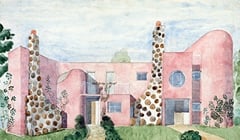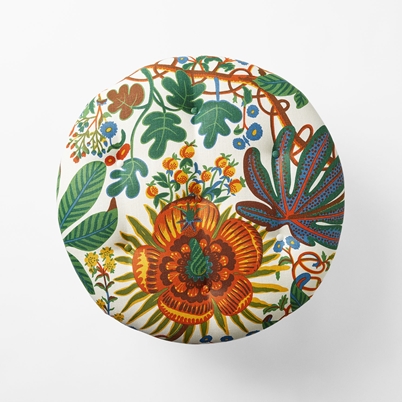At Svenskt Tenn, Josef Frank received both a unique stage and invaluable help from Estrid Ericson, who was an exceptionally artistically inclined producer. He awarded her by being extremely productive: there are over 3,000 sketches and 250 textile prints signed Frank in Svenskt Tenn’s archives.
Josef Frank (1885-1967) grew up in Vienna in an assimilated Jewish family and studied architecture at Konstgewerbeschule. In the 1920s he designed housing estates and large residential blocks built around common courtyards in a Vienna with severe housing shortages. In 1925 he started the Haus & Garten interior firm together with architect colleagues Oskar Wlach and Walther Sobotka.
Josef Frank was one of early Vienna modernism’s foremost figures, but already in the beginning of the 1920s he started to question modernism’s growing pragmatism. He had little appreciation for the French architect Le Corbusier’s belief that a house should be “a machine for living in”. He was against puritanical principals and on the contrary, feared that standardised interiors would make people all too uniform.
Josef Frank represented a freer, more artistic style ideal and he developed his own type of modernism where values like comfort, hominess and a wealth of colour were at its core. He resisted limitations and models for his furniture and textiles came from across all boundaries both in time and space. He perceived tubular steel furniture as a threat to humanity. On the contrary he wanted to include nature’s colours and forms in his interiors to be able to breathe and exude freedom even in closed rooms. For the same reason he preferred furniture that people could see through. A chair should have an open back and a cupboard should be on legs that were so high that one could distinguish the borderline between the floor and the wall.




















































































































